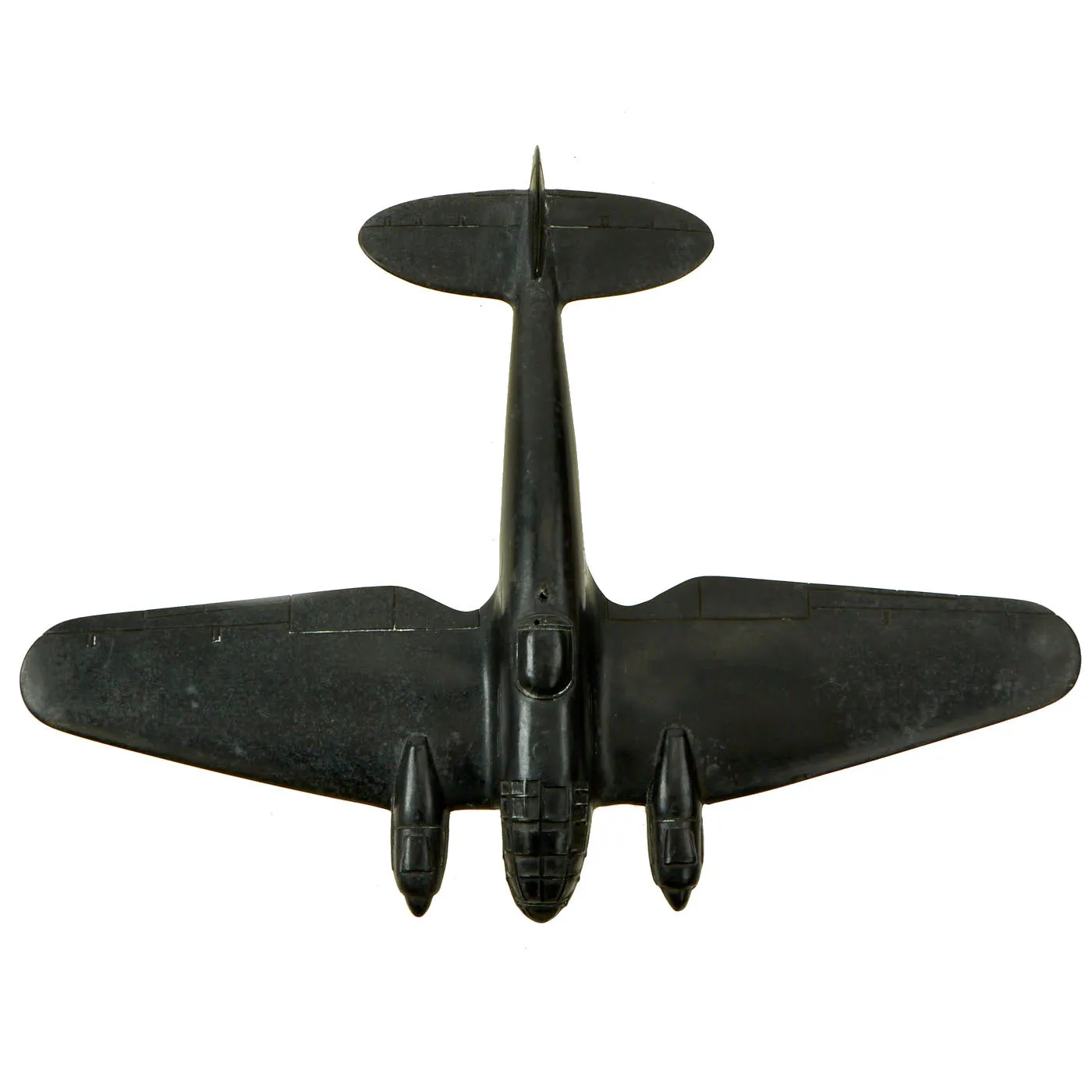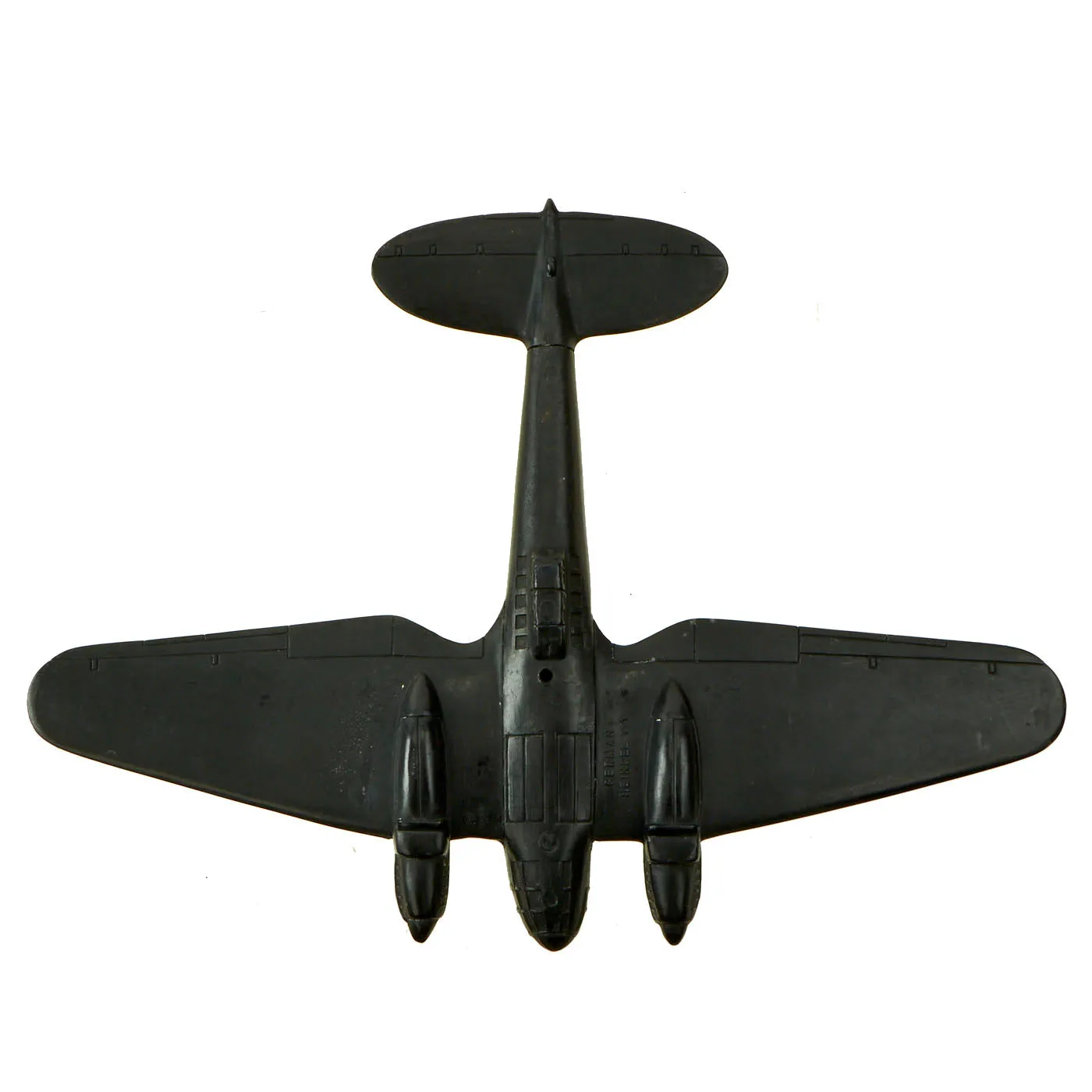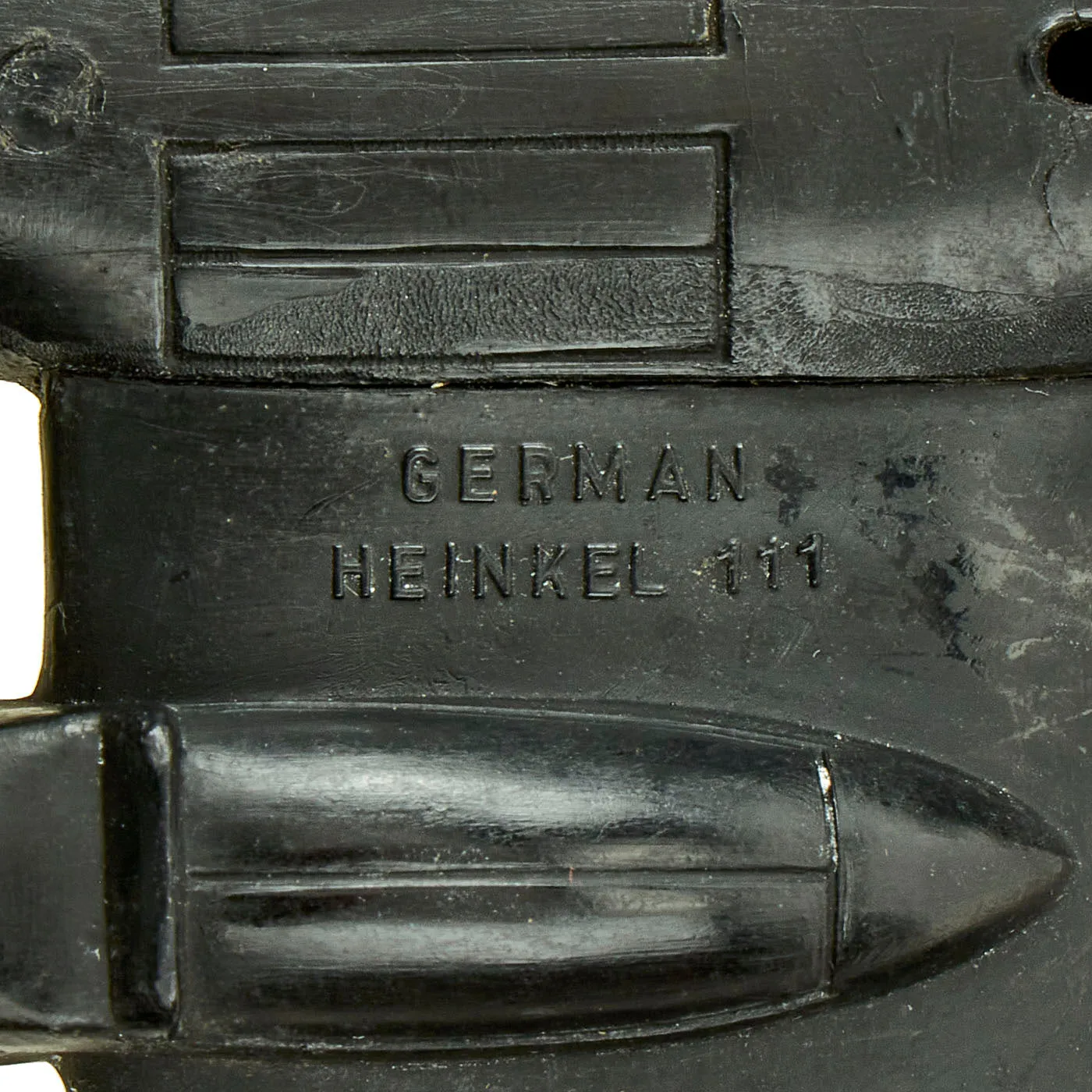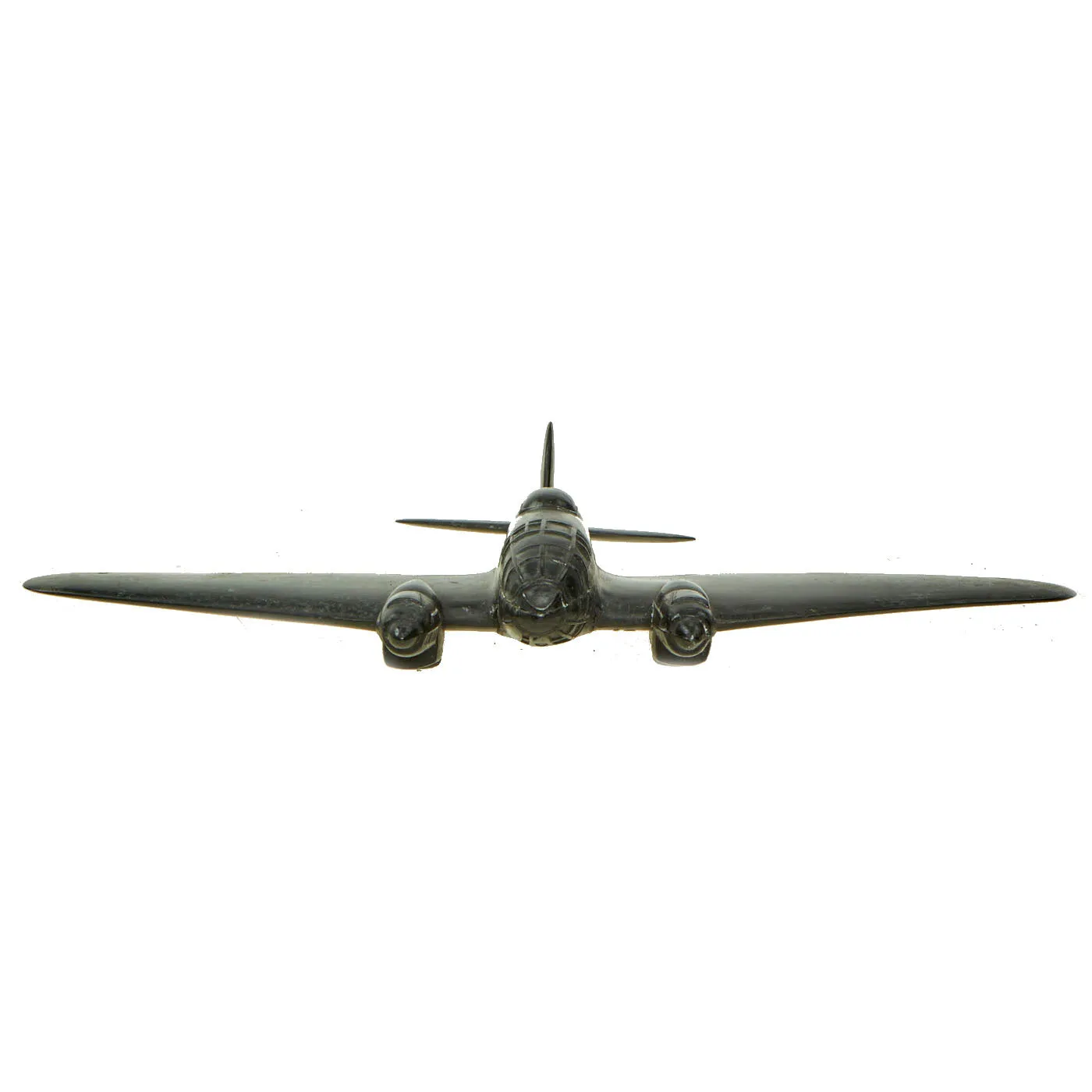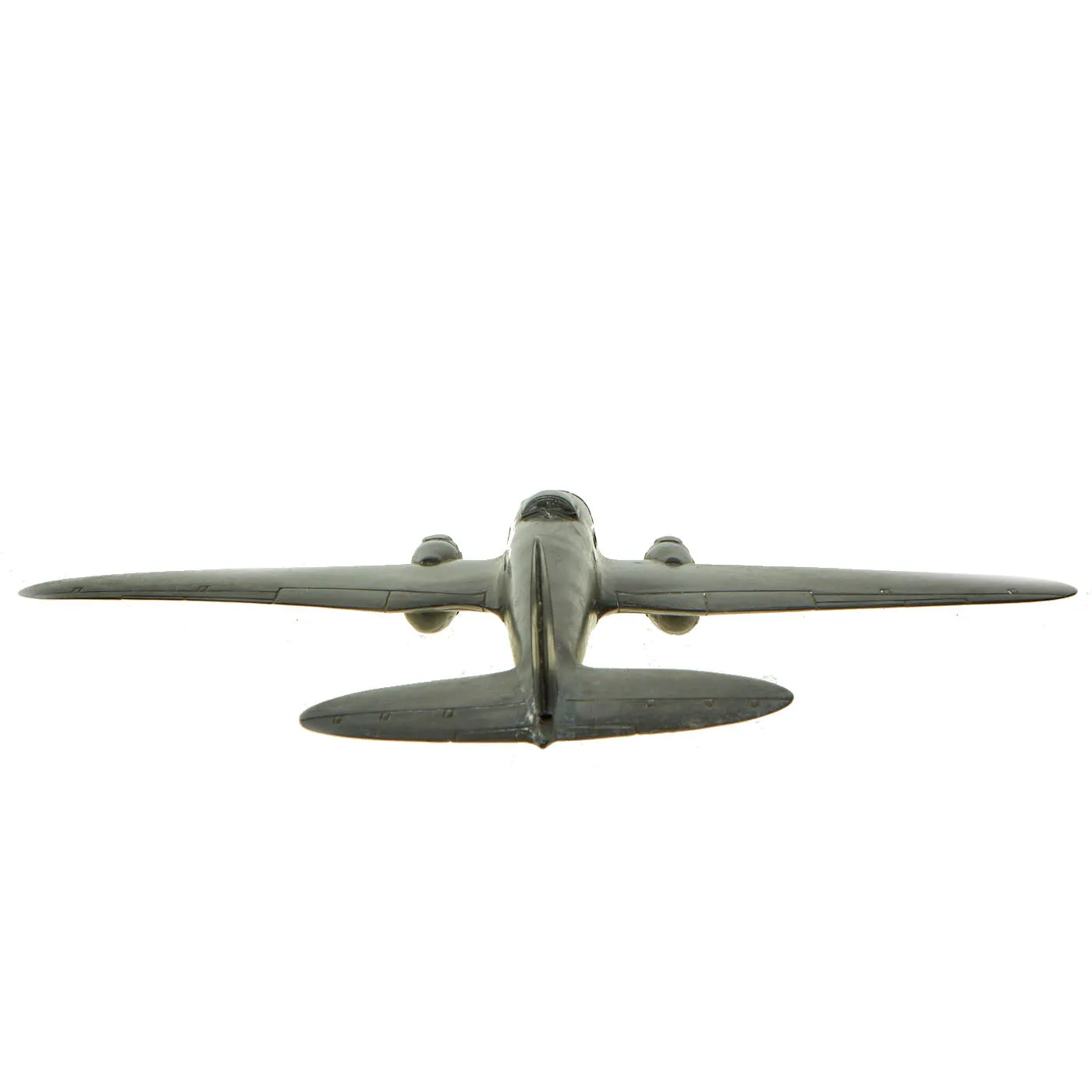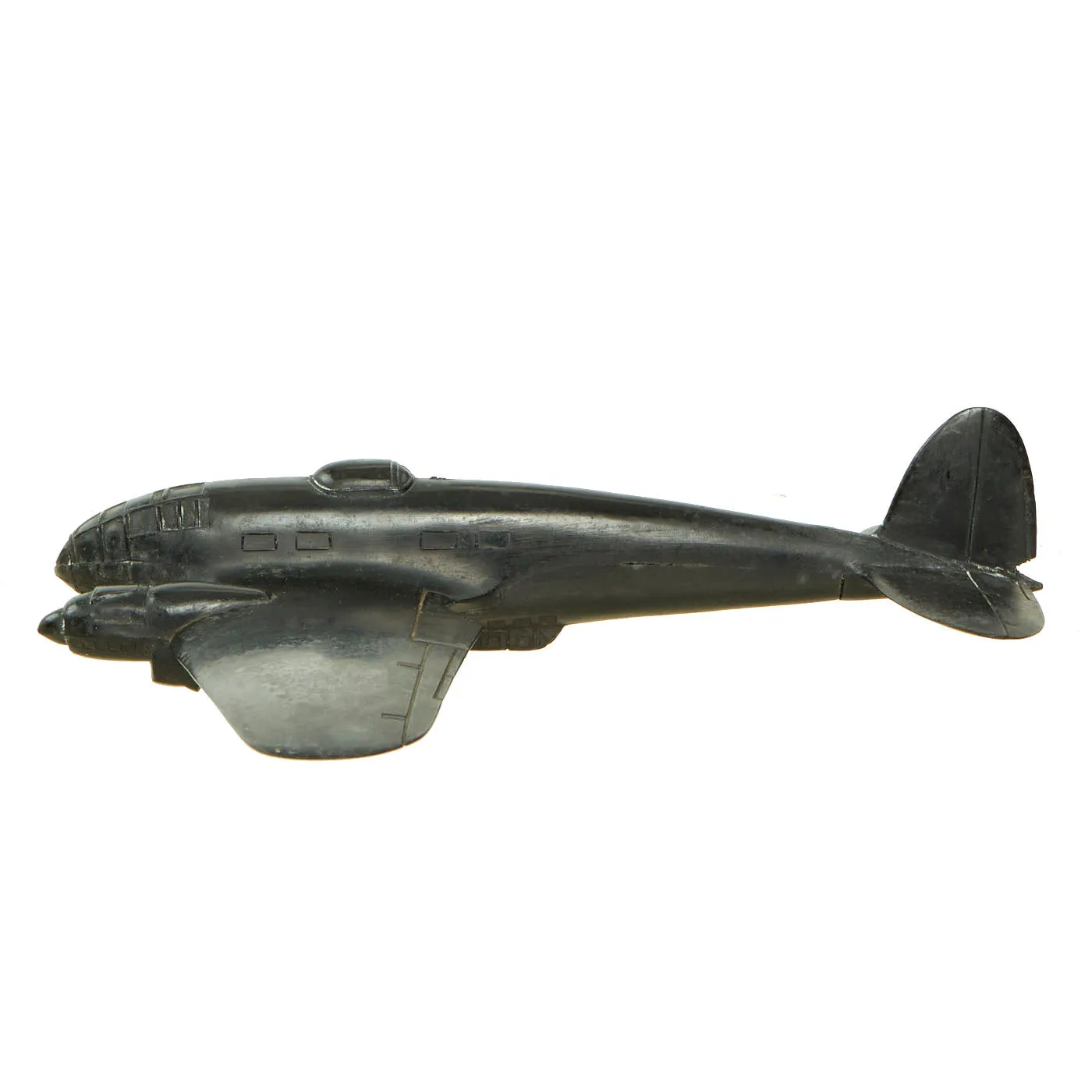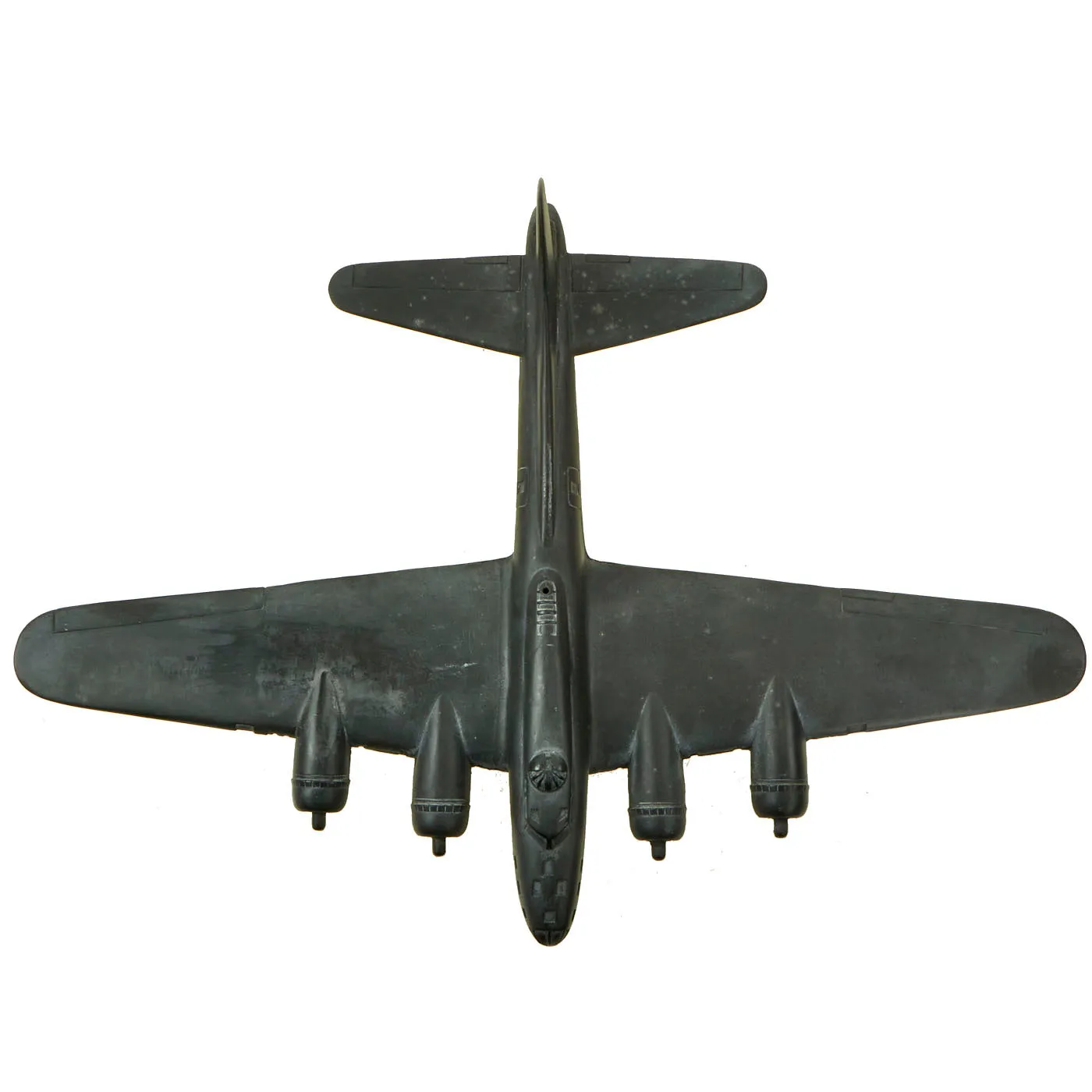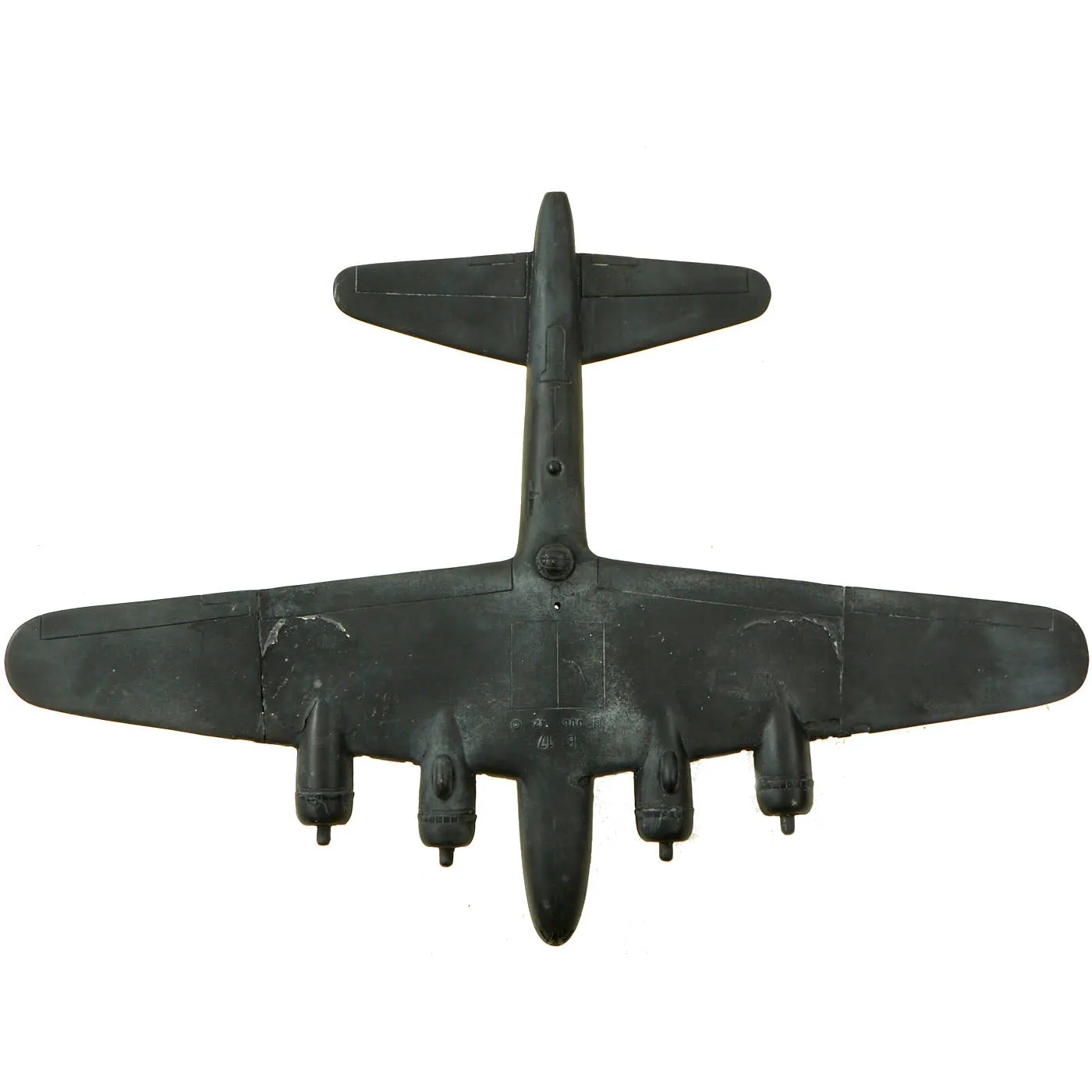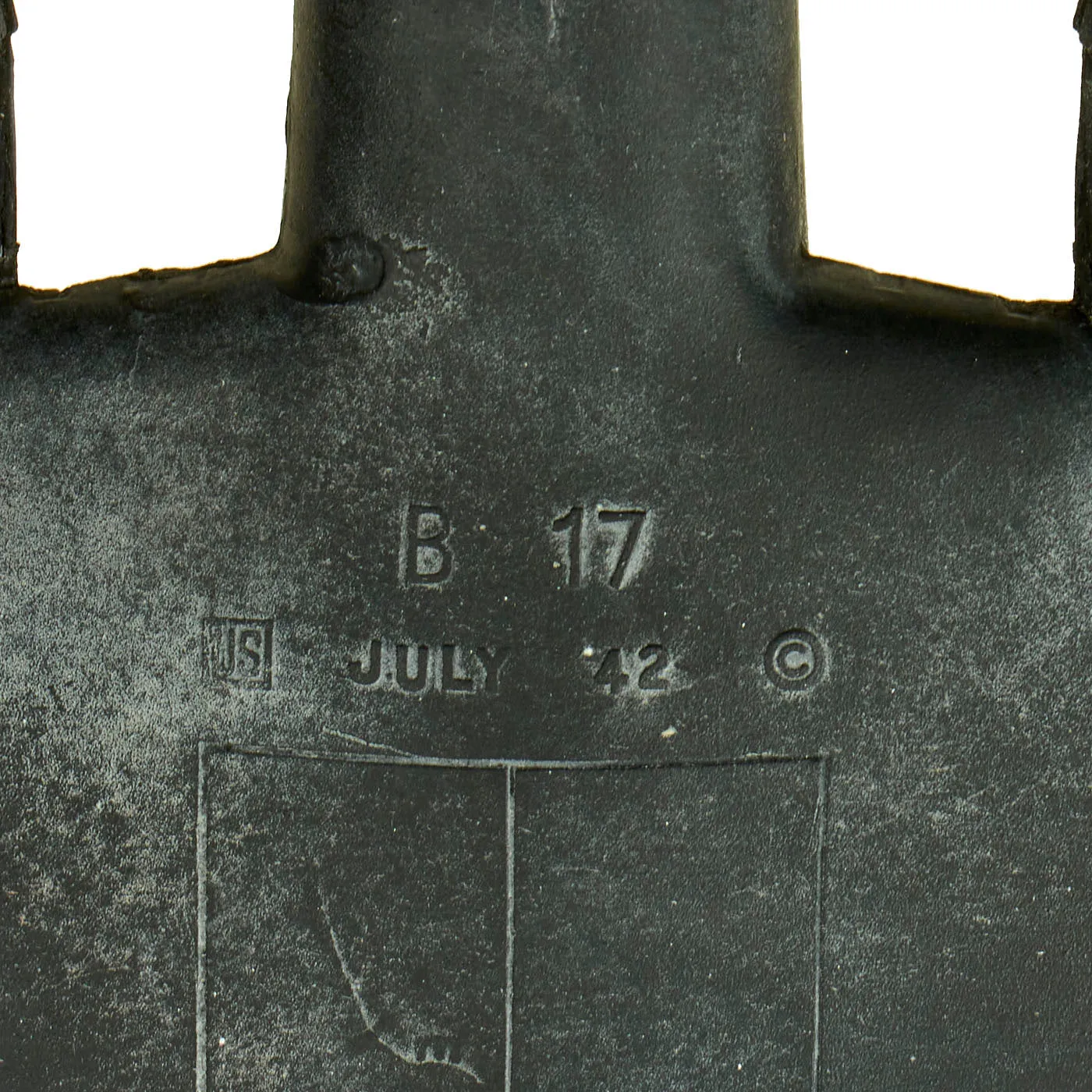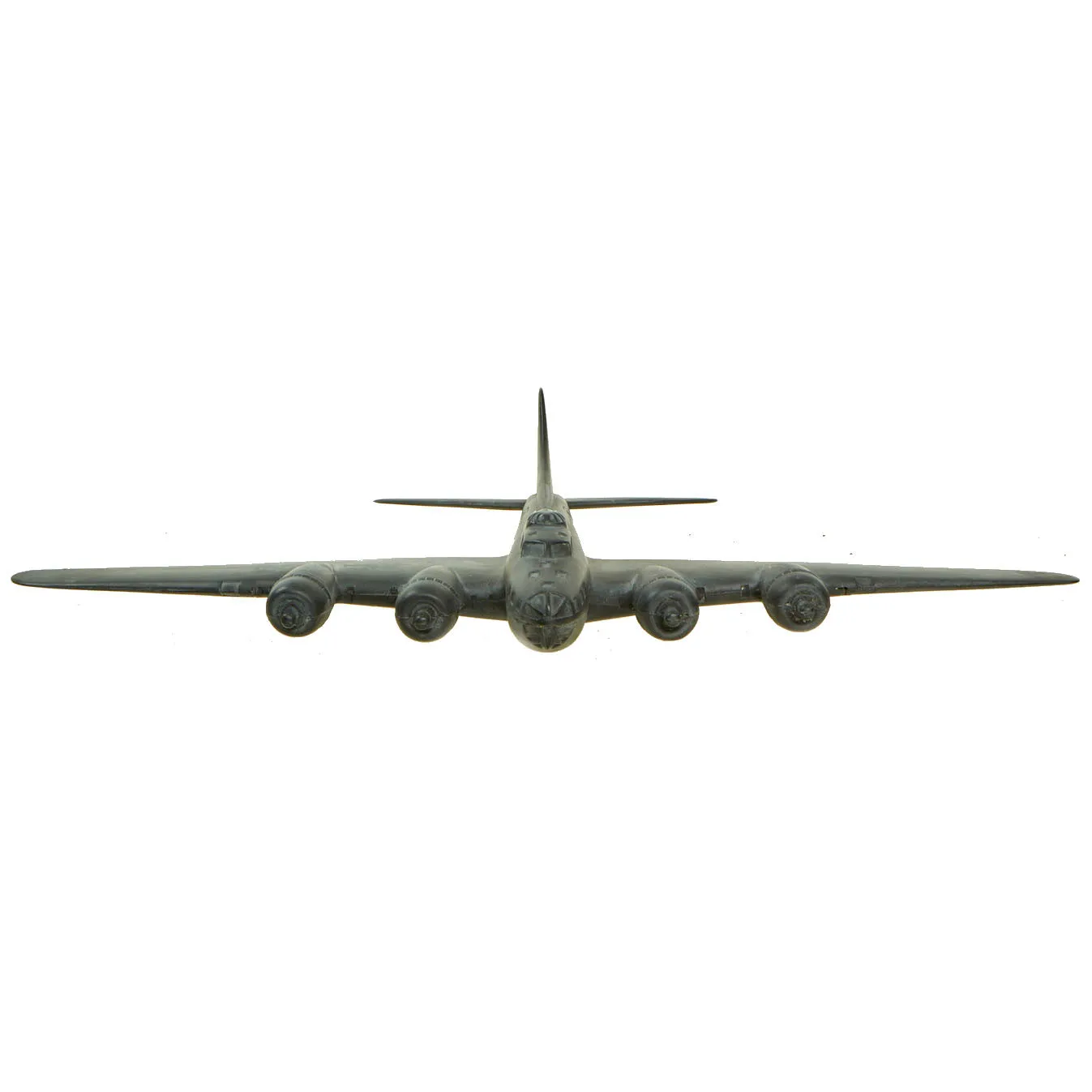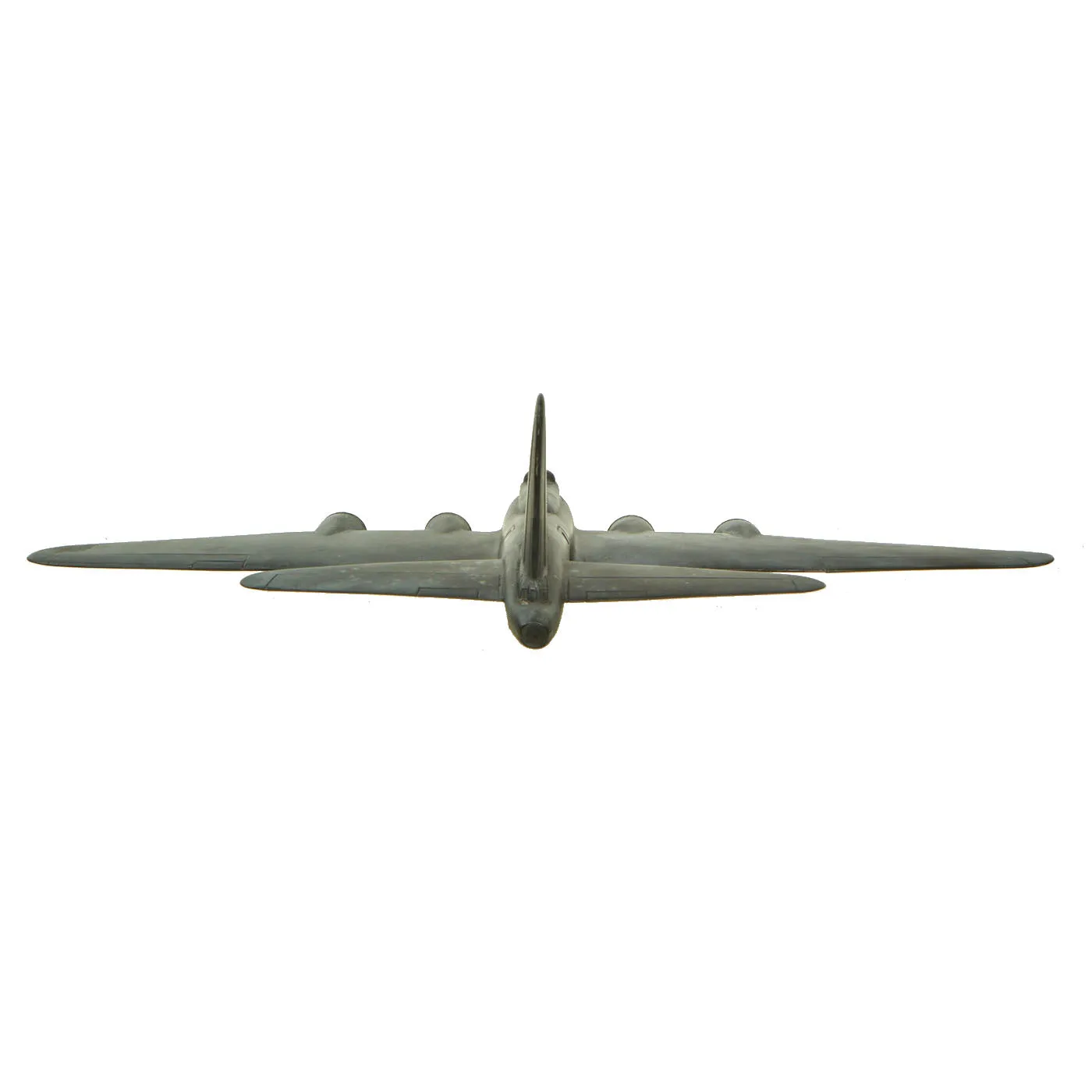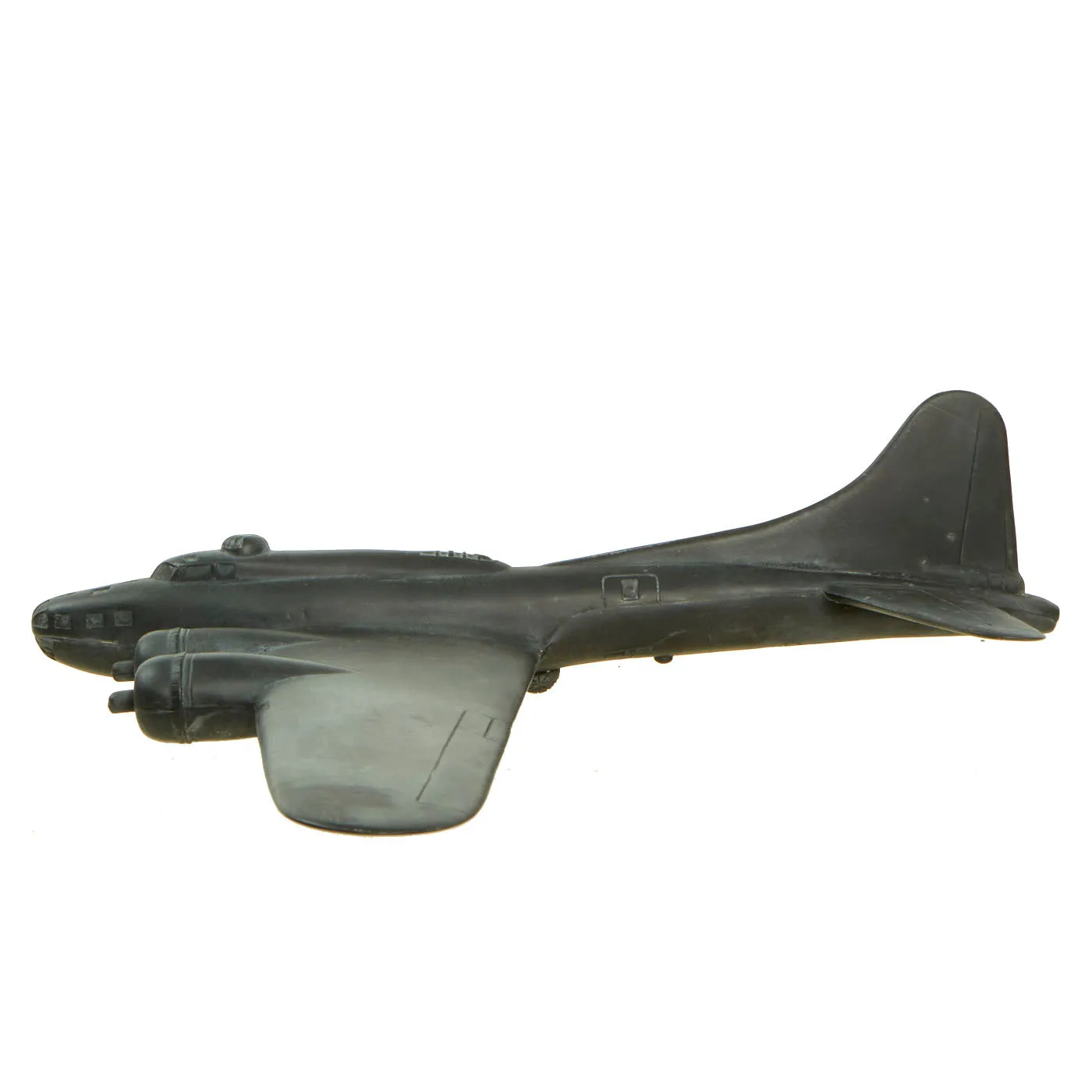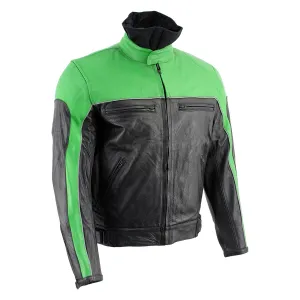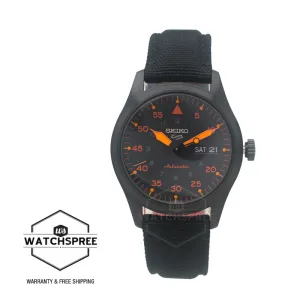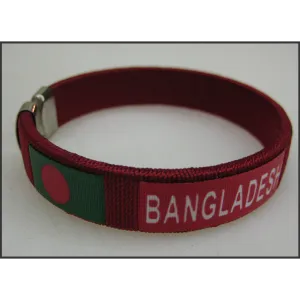Original Item: Only One Available. During World War Two there was a mass of teaching materials used by the armed forces to train gunners and aircrew in the identification of aircraft, ships and ground vehicles. The ability of servicemen to identify "friend or foe" in an instant was crucial to combat survival and the subject of recognition was taught in just about every World War II service school. Trained spotters were important to the war effort and to aid them 1:72 scale plastic models were made. The manufacturers Cruver and Design Center for airplane models are well known as being the primary providers of almost all production models in plastic.
These are beautiful, original (cellulose acetate) Cruver models with no distortion or deterioration, but there are imperfections from when they were made. Underbody designations read:
B 17
US JULY 42 © (Cruver Logo “C”)
Wingspan measures 17 ½” with a length of 12”
The Boeing B-17 Flying Fortress is a four-engined heavy bomber developed in the 1930s for the United States Army Air Corps (USAAC). Competing against Douglas and Martin for a contract to build 200 bombers, the Boeing entry (prototype Model 299/XB-17) outperformed both competitors and exceeded the Air Corps' performance specifications. Although Boeing lost the contract (to the Douglas B-18 Bolo) because the prototype crashed, the Air Corps ordered 13 more B-17s for further evaluation. From its introduction in 1938, the B-17 Flying Fortress evolved through numerous design advances, becoming the third-most produced bomber of all time, behind the four-engined Consolidated B-24 Liberator and the multirole, twin-engined Junkers Ju 88.
GERMANY
HEINKEL 111
© 9-42
Wingspan measures 12” with a length of 9”
The Heinkel He 111 was a German airliner and bomber designed by Siegfried and Walter Günter at Heinkel Flugzeugwerke in 1934. Through development, it was described as a "wolf in sheep's clothing". Due to restrictions placed on Germany after the First World War prohibiting bombers, it was presented solely as a civil airliner, although from conception the design was intended to provide the nascent Luftwaffe with a heavy bomber.
Perhaps the best-recognised German bomber of World War II due to the distinctive, extensively glazed "greenhouse" nose of the later versions, the Heinkel He 111 was the most numerous Luftwaffe bomber during the early stages of the war. It fared well until it met serious fighter opposition during the Battle of Britain, when its defensive armament was found to be inadequate. As the war progressed, the He 111 was used in a wide variety of roles on every front in the European theatre. It was used as a strategic bomber during the Battle of Britain, a torpedo bomber in the Atlantic and Arctic, and a medium bomber and a transport aircraft on the Western, Eastern, Mediterranean, Middle Eastern, and North African Front theatres.
Both are in wonderful condition and come ready to display!





